In this tutorial, we will learn how to create an EC2 server on the AWS Cloud and setup Java and Tomcat on that server.
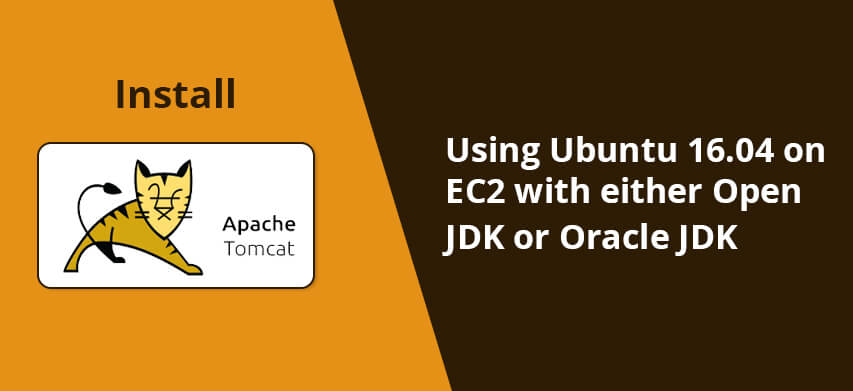
Please note that in this tutorial, we are going to do some basic server setup (which is already been explained over last published tutorial, please read How To Launch An AWS EC2 Server And Set Up Ubuntu 16.04 On It ).
Firstly, we would be creating a server by logging into an EC2 account.
We need to go to the EC2 dashboard to launch instance. Now, we are going to do step by step of basic server setup:
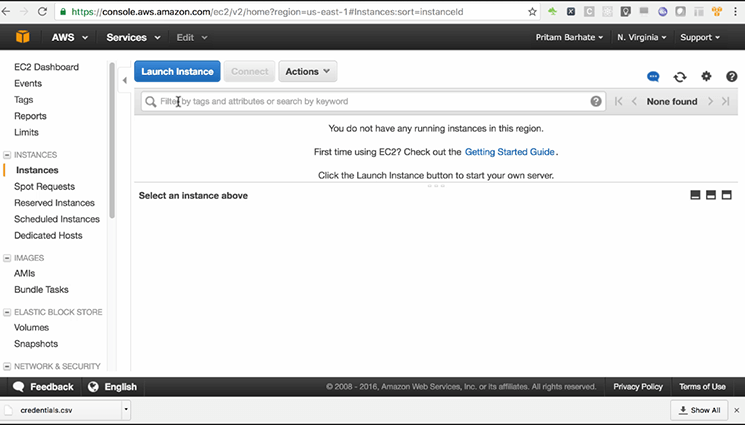
Step 1: Select Ubuntu 16.04 (64 bit) on your EC2 dashboard;
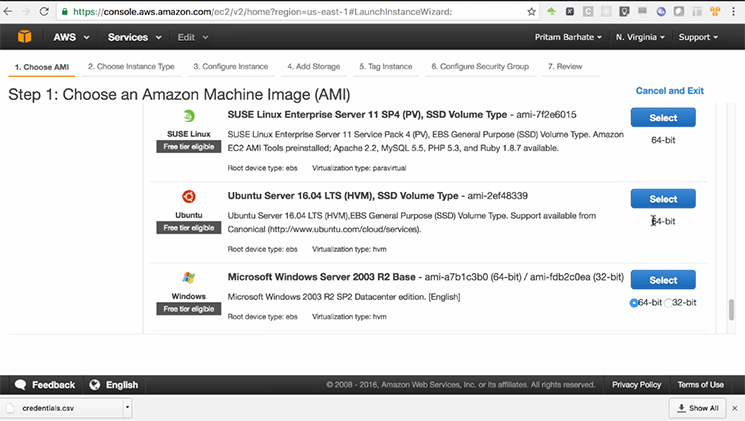
Step 2: Use t2.small as Java generally requires more RAM;

Step 3: Enable Protection against accidental termination, other than that, keep other settings as it is;
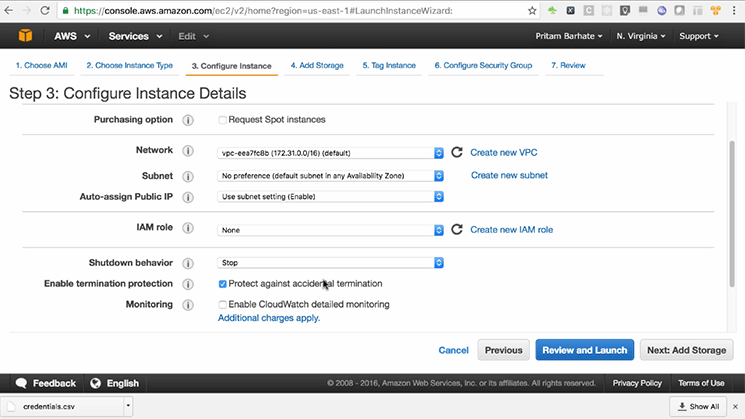
Step 4: For storage, use 25 GB, General purpose SSD;
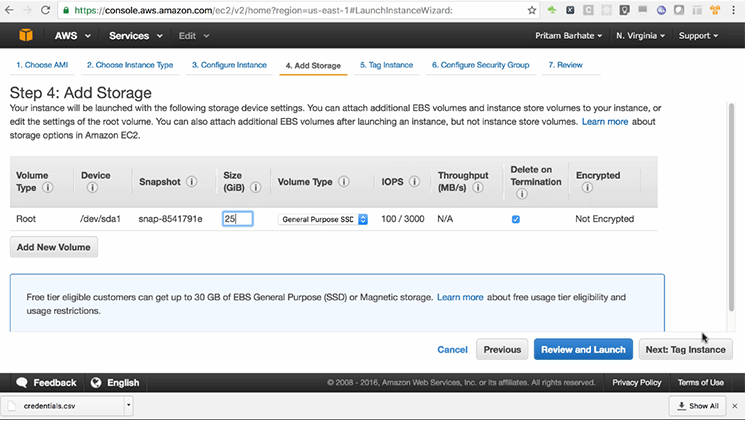
Step 5: Tag Instance: Enter value as “Javasetup”
Step 6: Configure Security Group, In this, you can either use/select the existing security group or can create a new security group. We will create a new one and will give it a name and a description:
-
- Security Group Name: JavaSetup
-
- Description: Security Group created for Java setup
Type: SSH
Protocol: TCP
Port range: 22 (for now)
Source: Anywhere
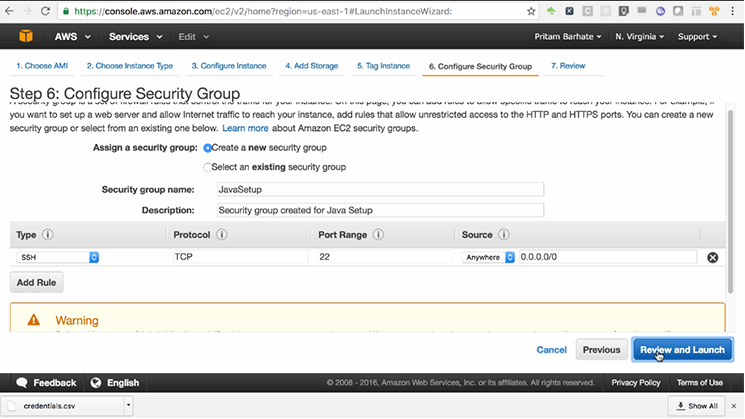
Step 7: Review Instance Launch and if it looks fine then proceed.
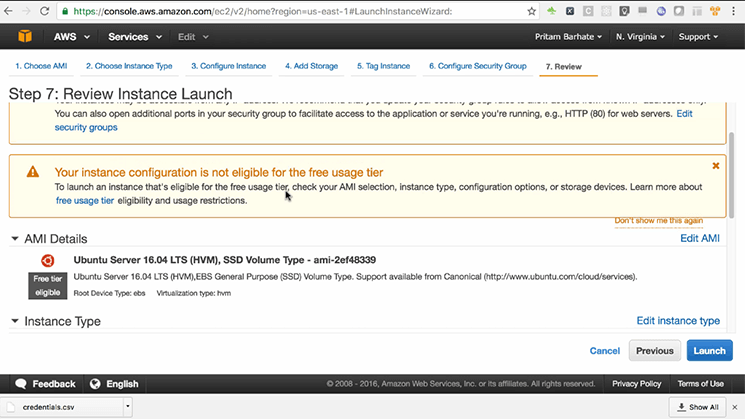
Now, select ‘Launch’. When you do that, a dialog box would pop up giving you an option of selecting an existing key pair or creating a new key pair.
Here, we are going to use an existing key pair. It’s OK, if you might want to create a new set of key pair.
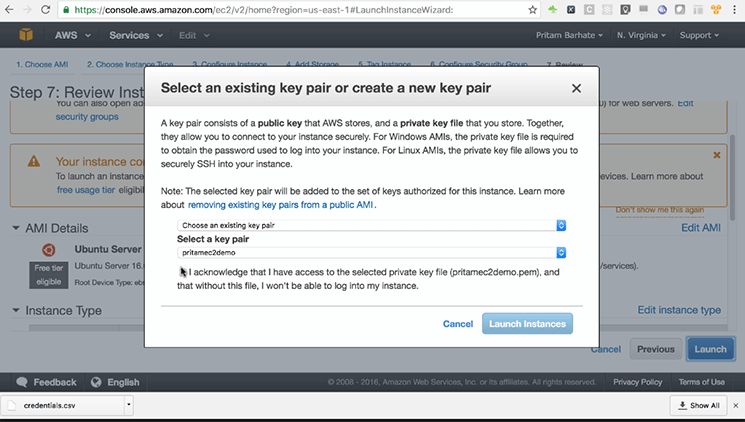
For this instance, we require Elastic IP address. So, while it launches I will provision for it.

Check if your instance is working. Now, you need to associate the Elastic IP with our Java setup server.
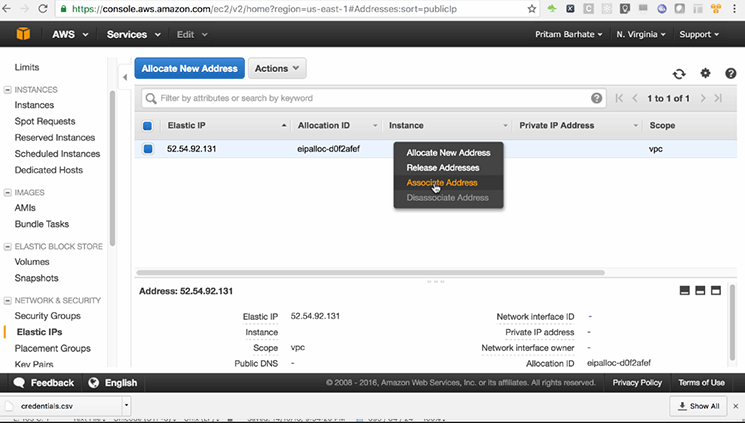
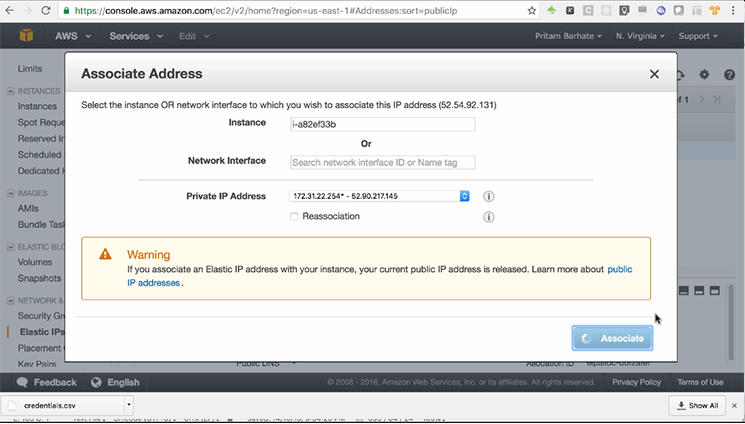
Go to >>
Instances>Elastic IP Address
Now, review if Elastic IP Address is present.
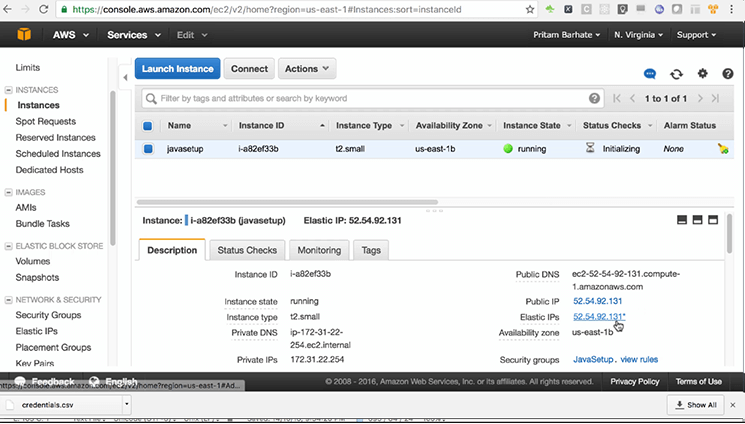
Now, I used to do the SSH login to the server.
Post that, we will run through the basic server setup. (You can refer to the previous tutorial on basic server setup)
We’ll have to wait for a couple of minutes then it will restart. When the system is back on, proceed through the further process of setting up of the JDKs and the Tomcat servers:
From now on, our preferred JDK would be Open JDK because most of the beanstalk installation as well as Heroku prefers Open JDK. Therefore, we need to add an apt-get source from where JDK is installed.
To add apt-get source, please run this command:
$ sudo -E add-apt-repository ppa:openjdk-r/ppa
When the source is added, update by running this command:
$ sudo apt-get update
We’ll learn, now, how to install multiple versions of JDKs and how to switch between them. The first one is Open JDK 7, for its setup run this command:
$ sudo apt-get install openjdk-7-jdk
Now, how to check if the above setup is done or not?
Run this command on the directory:
>>
$java -version
When you run this command, you’ll get this as a result:
#-> java version "1.7.0_95" #-> OpenJDK Runtime Environment (IcedTea 2.6.4) (7u95-2.6.4-3) #-> OpenJDK 64-Bit Server VM (build 24.95-b01, mixed mode)
Similarly, now we want to check JavaC version. For that, we need to run this command:
$javac -version

It’s again 1.7.0_95
Following the same process, we would now install Open JDK 8 and run this command:
$sudo apt-get install openjdk-8-jdk
After this, we will check the Java version:
$java -version
When you run this command, you’ll get this as a result:
# openjdk version "1.8.0_91" # OpenJDK Runtime Environment (build 1.8.0_91-8u91-b14-3ubuntu1~16.04.1-b14) # OpenJDK 64-Bit Server VM (build 25.91-b14, mixed mode)
Now, we will check Javac version and run this command:
$javac -version
It’s also 1.8.0_91
# javac 1.8.0_91
Now, let’s try to switch back to JDK-7 for that command is:
$update-java-alternatives –list
This shows which JDKs are installed and what’s the value of JAVA_HOME for each of those.
We would now want to switch to this:
java-1.7.0-openjdk-amd64
So, we will do that by running this command:
$sudo update-java-alternatives --set java-1.7.0-openjdk-amd64
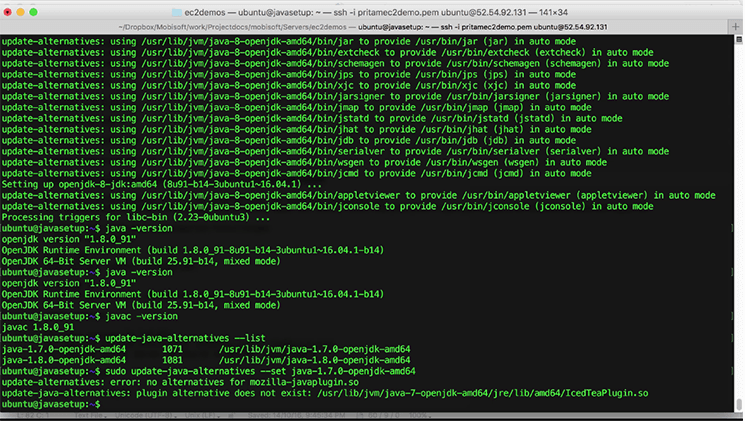
Unfortunately, it fails because there’s some problem with Mozilla-javaplugin.
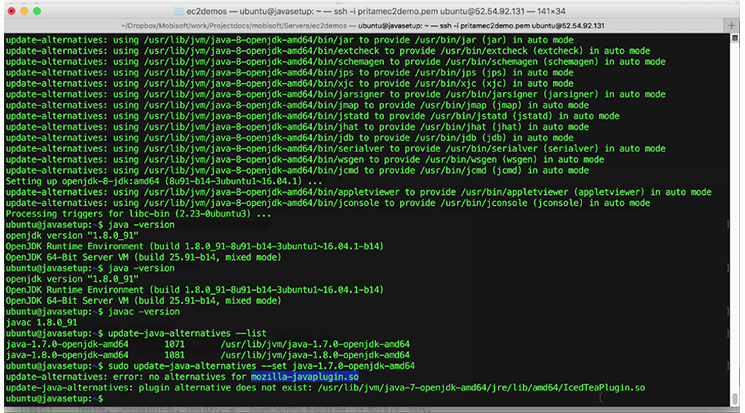
To fix this issue, we need to install that very plugin and for that we would require a ppa-source. You can add it by running this command:
$sudo add-apt-repository ppa:maarten-fonville/ppa
Now, we need to update the apt-get sources again!
For that, we want to run this command:
$sudo apt-get update
Now, these are the commands for:
# For JDK 7 plugin
sudo apt-get install icedtea-web
# ForJDK 8 plugin
sudo apt-get install icedtea-8-plugin
After this, you can check Java version and Javac version. Here, are the required commands and the expected results:
$ java -version #-> java version "1.7.0_95" #-> OpenJDK Runtime Environment (IcedTea 2.6.4) (7u95-2.6.4-3) #-> OpenJDK 64-Bit Server VM (build 24.95-b01, mixed mode) $ javac -version
#-> javac 1.7.0_95
Sometimes you need to run “sudo update-alternatives –config javac” to change javac. But right now, it is not needed.
Next, we would now add Oracle’s JDKs. For that, you want to add one ppa, i.e:
$ sudo add-apt-repository ppa:webupd8team/java
Now, let’s update the apt-get sources:
$ sudo apt-get update
Next, we would be installing Oracle Java6, Java7 and Java8 one by one:
Here are the following commands you need to run:
$ sudo apt-get install oracle-java6-installer $ sudo apt-get install oracle-java7-installer $ sudo apt-get install oracle-java8-installer
Please note that you would not typically install all of these on the server. You would typically install Open JDK 8. In this tutorial, you’re taught to do so because if you require any specific JDK for your project you would be able to do it.
Now, we will check the update Java alternatives by running this command:
$ update-java-alternatives --list
You can see that all the JDK versions are now available to use on this system.
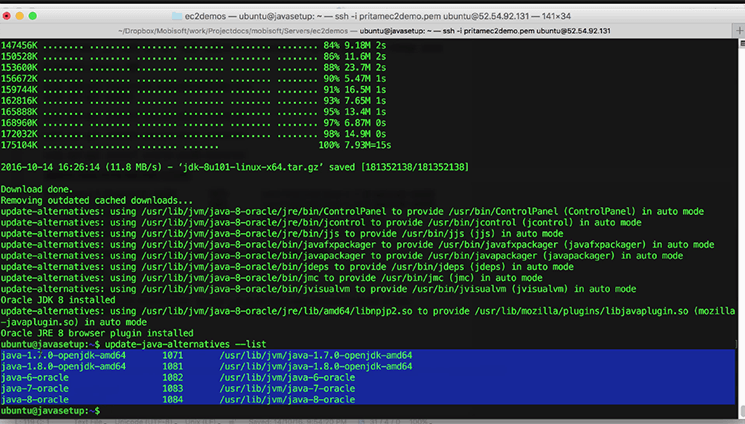
#-> java-1.7.0-openjdk-amd64 1071 /usr/lib/jvm/java-1.7.0-openjdk-amd64 #-> java-1.8.0-openjdk-amd64 1081 /usr/lib/jvm/java-1.8.0-openjdk-amd64 #-> java-6-oracle 1082 /usr/lib/jvm/java-6-oracle #-> java-7-oracle 1083 /usr/lib/jvm/java-7-oracle #-> java-8-oracle 1084 /usr/lib/jvm/java-8-oracle
We would like to use Open JDK 8, so to set that up we need to run this command:
$ sudo update-java-alternatives --set java-1.8.0-openjdk-amd64
Now, let’s check the java and javac versions. To see, if it is correct we need to run the following commands:
$java -version
Expected result would be:
#-> openjdk version "1.8.0_91" #-> OpenJDK Runtime Environment (build 1.8.0_91-8u91-b14-3ubuntu1~16.04.1-b14) #-> OpenJDK 64-Bit Server VM (build 25.91-b14, mixed mode) $javac -version
Expected result would be:
#-> javac 1.8.0_101
Both java and javac versions are correct!
We are ready to install Tomcat. I have used this tutorial to install Tomcat
## https://www.digitalocean.com/community/tutorials/how-to-install-apache-tomcat-8-on-ubuntu-16-04
I have made some minor changes, for this tutorial, to suit our requirements. Let’s create this directory in our home folder (~ denotes home folder), run the following commands:
$ mkdir ~/software $ cd ~ $ pwd
Home folder would be /home/ubuntu for this user
Let’s now download the Tomcat using the curl command
$ curl -O http://mirror.fibergrid.in/apache/tomcat/tomcat-8/v8.5.6/bin/apache-tomcat-8.5.6.tar.gz
Please note that you should get the latest download link from this (https://tomcat.apache.org/download-80.cgi) page.
Once it is downloaded, let’s go back to the home directory again and create the opt directory by running the commands one by one:
$ mkdir opt $ cd opt
And then to extract the Tomcat setup run this command:
$ tar xvzf ~/software/apache-tomcat-8.5.6.tar.gz -C .
After this, we will create a symlink so that we can refer to apache-tomcat-8.5.6 with just Tomcat:
$ ln -s ~/opt/apache-tomcat-8.5.6/ tomcat $ ls -la

Post this, we are going to create the startup script for Tomcat. With Ubuntu 16.04, the way to start script has changed. The preferred way to do it now is via systemd service. Before this, we used to create our script in /etc/init.d
This option is still available but as said before, the preferred way to do it is with systemd. Therefore, we would be using the same way of creating a startup script. For this, we basically need to create this file.
$ sudo vi /etc/systemd/system/tomcat.service
For this tutorial, I have already created this file. Note that, I have setup the following:
[Unit]
Description=Apache Tomcat Web Application Container
After=network.target
Environment=JAVA_HOME=/usr/lib/jvm/java-1.8.0-openjdk-amd64
Environment=CATALINA_PID=/home/ubuntu/opt/tomcat/temp/tomcat.pid
Environment=CATALINA_HOME=/home/ubuntu/opt/tomcat
Environment=CATALINA_BASE=/home/ubuntu/opt/tomcat
Environment=’CATALINA_OPTS=-Xms512M -Xmx1024M -server -XX:+UseParallelGC’
Environment=’JAVA_OPTS=-Djava.awt.headless=true -Djava.security.egd=file:/dev/./urandom’
ExecStart=/home/ubuntu/opt/tomcat/bin/startup.sh
ExecStop=/home/ubuntu/opt/tomcat/bin/shutdown.sh
User=ubuntu
Group=ubuntu
UMask=0007
RestartSec=10
Restart=always
[Install] WantedBy=multi-user.target
You might need to make some changes on this, on the basis of your project’s requirements.
Now, let’s reload the systemctl daemon by running this command:
$ sudo systemctl daemon-reload
Here, we can start Tomcat:
$ sudo systemctl start tomcat
It is up and running. To check, run either
$ ps aux | grep tomcat
Or via
$ sudo systemctl status tomcat
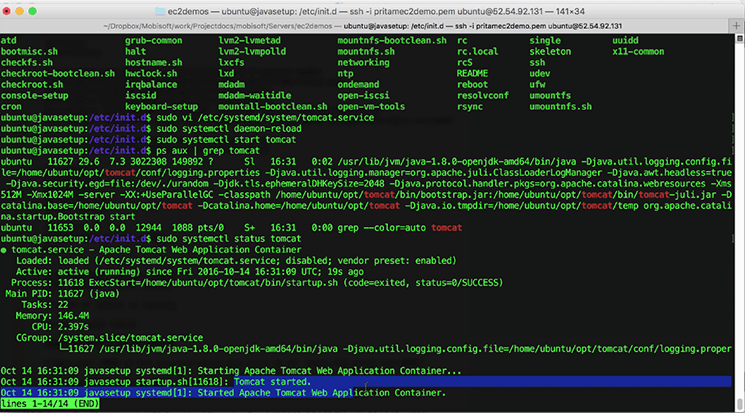
So, now Tomcat has started!
You may now want to check if Tomcat is running and if it is actually accessible but as you know, Tomcat runs on port 8080. So, you would require to open port 8080 in your security group.
Go to >> Security Group > Select the Security Group that you have created for the server > Edit inbound rules > Add a new TCP rule > Enter Port Range as 8080
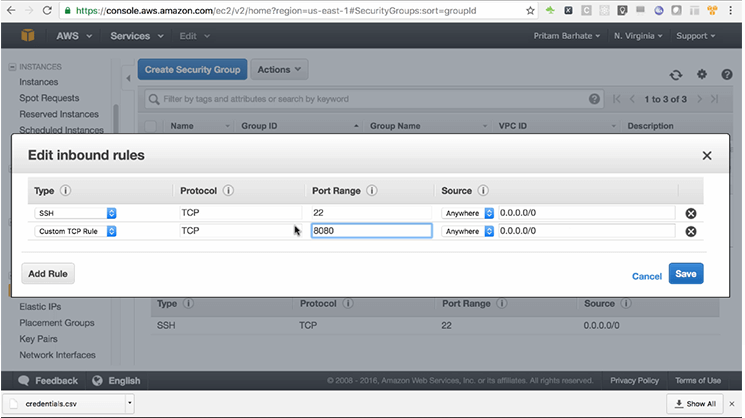
Allow it to be connected from ‘anywhere’ from the internet.
So, now if we go to our Elastic IP Address
Open port 8080 in EC2 security group and check it at: http://52.54.92.131:8080/
We should see the “Tomcat page”.
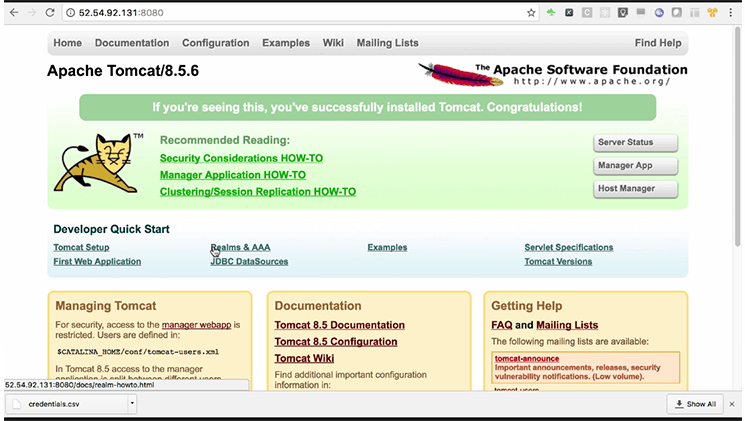
And it is there!

The “Manager App” should not be present here and should be stopped immediately for the reason that hackers looks for 8080 port and they try to hack this manager app.
Hence, we need to delete it. If it is setup, we will tell you how to delete it and restart Tomcat.
Stop the Tomcat.
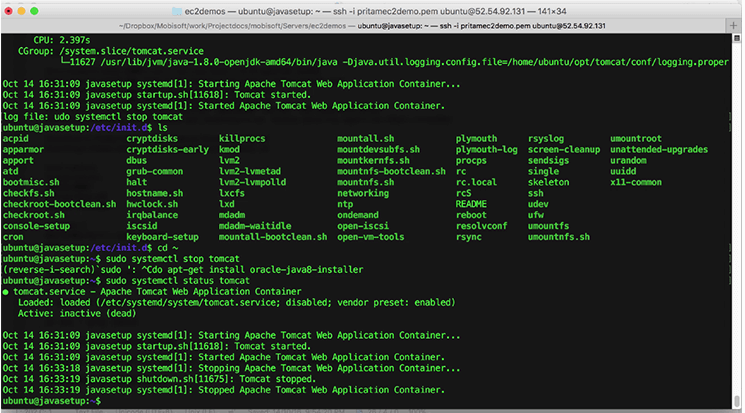
Run these commands to stop Tomcat:
$ sudo systemctl stop tomcat $ cd ~/opt/tomcat $ cd webapps/ $ rm -rf manager/ $ rm -rf docs/ $ rm -rf examples/ $ rm -rf host-manager/ $ ls
Now, go back and refresh to check if Tomcat has stopped.

Once it is stopped, let’s start Tomcat. We need to run this command:
$ sudo systemctl start tomcat
To check the status:
$sudo systemctl status tomcat

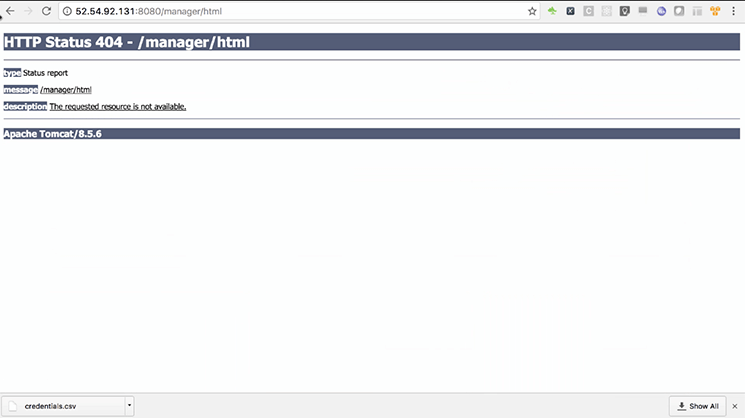
Tomcat is running and Manager app has stopped, you can see it when you go to the browser and check!
This is critically important to remove ‘Manager App’ so that hackers cannot get into our Tomcat instances. Anyway, we manage everything from the command line so we don’t really need this ‘Manager’.
So, that’s it. Our Apache Tomcat Server is ready for use.
 January 18, 2017
January 18, 2017


